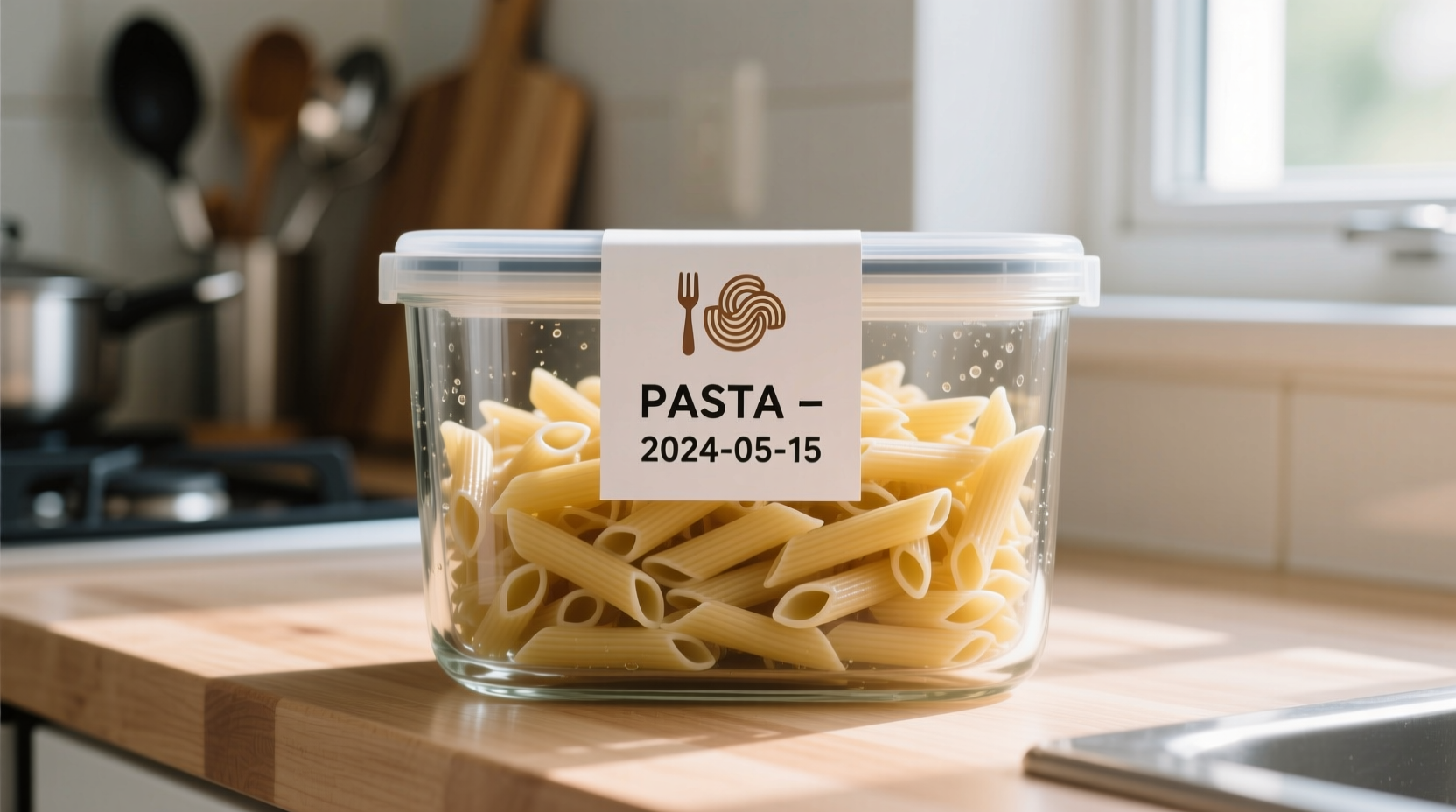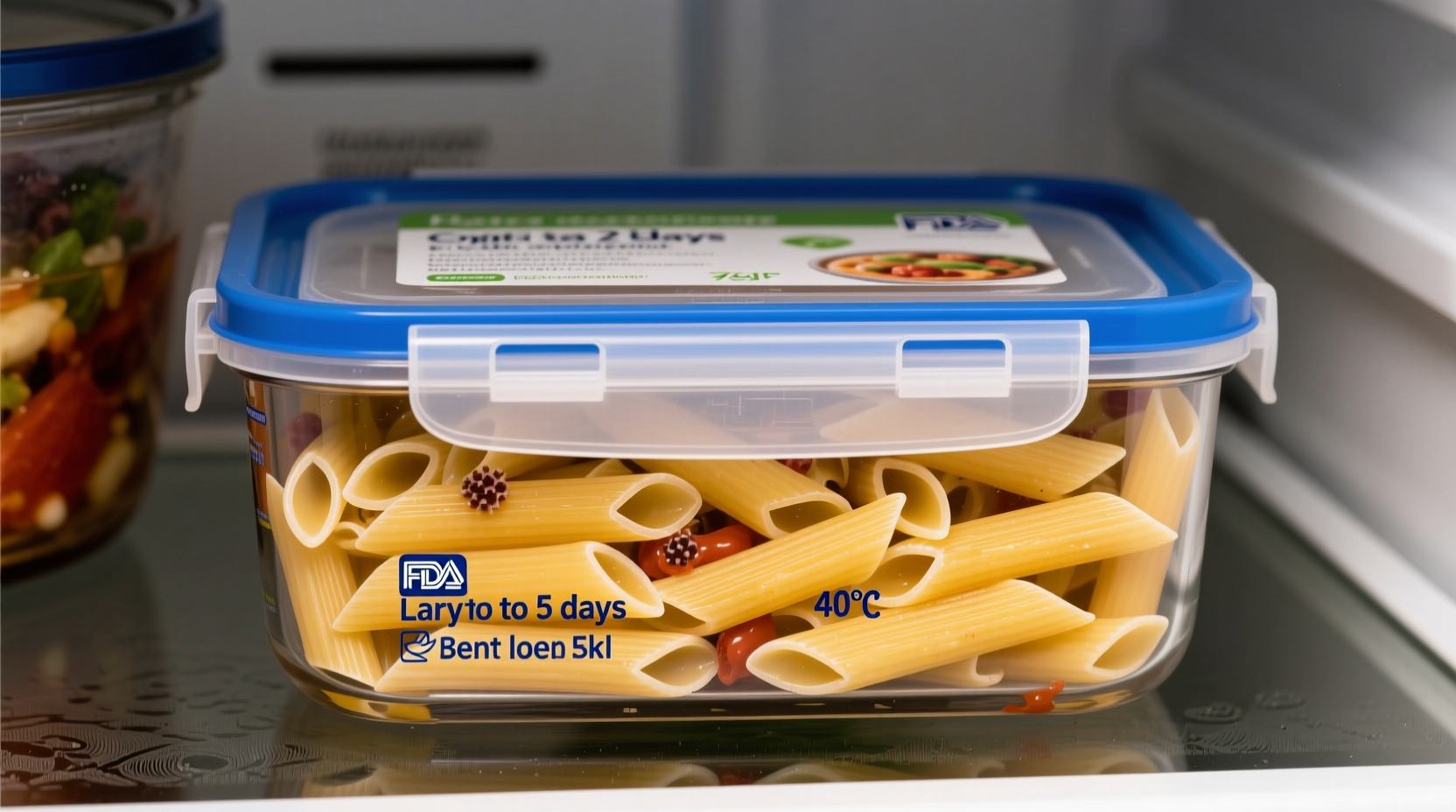Discover exactly how long your leftover pasta remains safe to eat while maintaining quality. This guide delivers science-backed storage timelines, spoilage warning signs, and professional chef techniques to maximize freshness - helping you reduce food waste without compromising safety.
Your Complete Timeline for Cooked Pasta Storage
Understanding precise storage windows prevents both food waste and potential illness. The USDA Food Safety and Inspection Service confirms that cooked pasta follows standard cooked food guidelines, but specific factors affect its exact shelf life.
| Storage Method | Optimal Duration | Temperature Requirement | Quality Preservation Tip |
|---|---|---|---|
| Refrigerator (plain pasta) | 3-5 days | 40°F (4°C) or below | Add 1 tsp olive oil per cup before storing |
| Refrigerator (with sauce) | 2-3 days | 40°F (4°C) or below | Store sauce separately when possible |
| Freezer (plain pasta) | 1-2 months | 0°F (-18°C) | Portion before freezing for single servings |
| Room temperature | 2 hours max | 40-140°F (4-60°C) | Discard if left out longer than 2 hours |
This timeline reflects recommendations from the USDA Food Safety and Inspection Service, which emphasizes that cooked starches like pasta enter the "danger zone" between 40-140°F where bacteria multiply rapidly.
Critical Storage Conditions That Change Shelf Life
Not all cooked pasta lasts equally long. These context boundaries significantly impact safety duration:
- Sauce composition: Cream-based sauces reduce shelf life to 2-3 days versus 3-5 days for oil-based preparations
- Pasta shape: Tubular shapes like penne trap more moisture, potentially shortening freshness by 12-24 hours
- Cooling speed: Pasta cooled to room temperature within 2 hours maintains maximum freshness
- Container type: Glass containers preserve quality 20% longer than plastic according to University of Minnesota Food Science research

Step-by-Step: Professional Storage Method
Follow this chef-tested process used in commercial kitchens to maximize pasta freshness:
- Cool immediately: Spread pasta in single layer on baking sheet for 15 minutes
- Add protective coating: Toss with 1 teaspoon olive oil per cup of pasta
- Choose proper container: Use airtight glass container with minimal headspace
- Label clearly: Note both storage date and "use by" date (3 days later)
- Refrigerate promptly: Place in coldest part of refrigerator (usually back bottom shelf)
Warning Signs Your Pasta Has Spoiled
Don't rely solely on dates - your senses provide crucial safety information. Discard pasta showing any of these spoilage indicators:
- Visual changes: Grayish hue, visible mold (even in isolated spots)
- Texture issues: Slimy film or excessive stickiness beyond normal starchiness
- Odor signals: Sour, fermented, or "off" smell (fresh pasta should have neutral aroma)
- Taste test (last resort): If other signs are questionable, a small taste reveals sourness
The FDA Food Code emphasizes that when in doubt, throw it out - no amount of reheating eliminates certain bacterial toxins once they've formed.
Safe Reheating Practices for Leftover Pasta
Proper reheating restores quality while ensuring safety. Always heat pasta to an internal temperature of 165°F (74°C), verified with a food thermometer:
- Stovetop method: Drop pasta in boiling water for 30-60 seconds, then drain
- Microwave technique: Heat in 30-second intervals with splash of water, stirring between
- Oven approach: Cover with foil at 350°F (175°C) for 10-15 minutes with sauce
Never reheat pasta more than once, as each cooling and reheating cycle increases bacterial growth risk according to CDC food safety guidelines.
Top 3 Storage Mistakes Home Cooks Make
Avoid these common errors that unnecessarily shorten pasta shelf life:
- Storing while still hot: Traps steam that creates condensation and promotes bacterial growth
- Using improper containers: Takeout containers with loose lids fail to create proper seal
- Ignoring sauce impact: Dairy-based sauces spoil faster than tomato-based alternatives
Food safety researchers at Cornell University found that properly cooled pasta stored in airtight containers maintained safety standards 40% longer than improperly stored samples.











 浙公网安备
33010002000092号
浙公网安备
33010002000092号 浙B2-20120091-4
浙B2-20120091-4